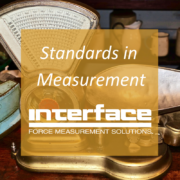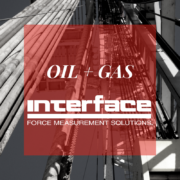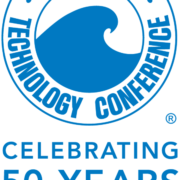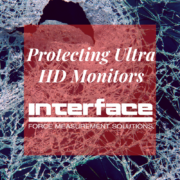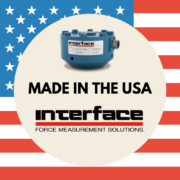Benefits of Load Monitoring in Quick Release Hooks
 Quick release hooks (QRHs) are essential for advanced maritime, energy, and lifting mooring systems. These specialized hooks ensure safe and efficient mooring operations by securing lines quickly and, most importantly, releasing rapidly, even under heavy loads. This capability significantly enhances safety and efficiency in demanding environments requiring rapid response.
Quick release hooks (QRHs) are essential for advanced maritime, energy, and lifting mooring systems. These specialized hooks ensure safe and efficient mooring operations by securing lines quickly and, most importantly, releasing rapidly, even under heavy loads. This capability significantly enhances safety and efficiency in demanding environments requiring rapid response.
QRHs are more than simple connectors. Advanced models integrate load measuring pins that monitor the forces acting on mooring lines. This data lets operators respond immediately to dangerous situations like slack or overloaded lines. Integrated alarms can trigger when loads exceed safe working limits, adding another layer of safety.
Types of Quick Release Hooks Using Load Pins
- Quick Release Mooring Hooks
- Quick Release Towing Hooks
- Quick Release Hooks for Offshore Operations
- Quick Release Hooks for Airlifts
- Quick Release Hooks for Lifting, Rigging and Hoisting
- Quick Release Buoy Hooks
- Quick Release Hooks for Aquaculture
Traditional mooring systems can pose significant risks. Failing lines, hooks, or even structural failures can lead to substantial damage, operational disruptions, and personnel endangerment. QRHs address these challenges by enabling rapid release and minimizing the potential consequences of such incidents.
Defining Requirements for Load Measuring Quick Release Hooks
To design an effective Quick Release Monitoring System using force measurement solutions, consider the following key factors:
- Maximum Angle of Movement – Determine each hook’s maximum range of vertical and horizontal motion. Excessive movement can impact measurement accuracy and potentially damage components. This information is crucial for selecting suitable load pins and mounting arrangements.
- Operating Height – The hook’s height influences communication and display options. Consider whether local or remote monitoring and wireless communication are necessary.
- IP Rating – Define the equipment’s required Ingress Protection (IP) rating. This rating indicates protection against dust and water ingress, ensuring reliable operation in harsh environments. Will you need a subsea, submersible, or splash zone design?
- Monitoring Frequency – Determine the necessary frequency of load monitoring. Continuous monitoring may be essential for critical applications, while periodic monitoring may suffice for others. This decision impacts data acquisition and processing requirements.
- Real-time Data Display – Specify whether real-time load information needs to be displayed. If so, consider the type of display (local or remote) and the required data visualization format.
- Data Logging and Analysis – Define requirements for data storage and analysis. How will the collected data be used for performance monitoring, maintenance planning, or process optimization?
- System Integration – Explore potential integration with other systems, such as alarm systems, control systems, or data visualization platforms, to enhance overall functionality and efficiency.
By carefully defining these requirements, you can ensure that your quick release monitoring system meets your specific operational needs and provides valuable insights into mooring line forces.
Interface Measurement Load Pins Ideal for Quick Release Hooks
Interface provides standard and custom solutions for load pin integration into quick release hooks. Our load pins and load shackles are commonly used for QRH applications. Engineers select Interface for our durability, quality and accuracy of measurement. We have supplied hundreds of load pins to quick release hook OEMs and end users to facilitate the retrofitting of a mooring load monitoring system or simply replace damaged or older load pins.
We can supply them with amplified outputs, external grease ways, and cable glands and cables that meet individual customers’ specifications. We have also designed and supplied many ATEX and IECEx options for use in hazardous areas.
All our load pins are internally gauged to protect the strain gages and maximize design life. When a force is applied, the resulting deformation is produced. Superior linearity over other designs. High levels of environmental sealing can also be achieved (IP68/69).
Why Interface Load Pin for Quick Release Hook Applications
- Ex d and Ex i hazardous area certified versions available (ATEX and IECEx)
- Safe area (non-hazardous area) versions available
- Single and dual bridge versions are available
- Can supply with EN ISO 10204 3.1 or 3.2 material certification
- Available with EN ISO 13849-1 and EN ISO 13849-2 safety in machinery certification
- Various internal signal conditioning options are available
- All pins are manufactured using 17-4PH stainless steel
- No size or capacity restrictions
- Downhole strain gage design
- In-house test and calibration rigs to 1500te, annually certified per EN ISO 7500-1
 Quick Release Mooring Hooks Application
Quick Release Mooring Hooks Application
These load pins have been dispatched to a leading manufacturer of mooring equipment and will be installed in quick release mooring hooks to monitor mooring line loads. Environmentally sealed to IP68, they are suitable for submersion to 50m and have been pressure tested to 10 psi. They have also been machined to include external circumferential grease ways, have integral amplifiers to provide 4-20mA output, and, for additional protection, have been supplied with 4-core steel armored cable. They are ATEX-certified for hazardous area use.
Quick Release Hook System
A customer wants to test the strength of the cable line used in the hoist of their vessel. They need to test their advanced Quick Release Hook (QRH) System when their vessels are docked to ensure the mooring lines are secured and the hooks can be easily and safely released. Interface’s WTSLP Stainless Steel Load Pin can be installed into the quick release hook, where forces from the mooring lines can be measured and displayed when paired with the WTS-BS-4 USB Industrial Base Station. The WTS-RM1 Wireless Relay Output Receiver Module alarm can also be triggered for the customer when maximum safety workload capacities are reached or overloaded.

Partner of Choice for QRH Measurement Solutions
Interface’s solutions prioritize safety by incorporating robust load monitoring capabilities that provide real-time insights into mooring line forces. This allows operators to proactively identify and address potential hazards, preventing accidents and enhancing personnel safety. Furthermore, Interface solutions promote efficiency by delivering accurate and reliable load data, streamlining mooring operations, and optimizing turnaround times.
With Interface, advanced monitoring systems support real-time data visualization and analysis. This enables immediate action in response to critical events, such as overload situations or sudden changes in line tension. By choosing Interface, you effectively minimize the risks inherent in traditional mooring methods.
The combination of real-time monitoring and robust quick release mechanisms ensures rapid response to potential hazards, reducing the likelihood of accidents and damage. Interface’s expertise in load measurement and sensor technology makes us an optimal choice for engineers in designing, testing, and deploying quick release hook solutions that enhance your mooring operations through accurate, quality measurement.
ADDITIONAL RESOURCES
Webinar Use Cases for Load Pins
How to Use the Configurator – Training
Load Pin, Load Shackles, and Tension Load Links Product Family
